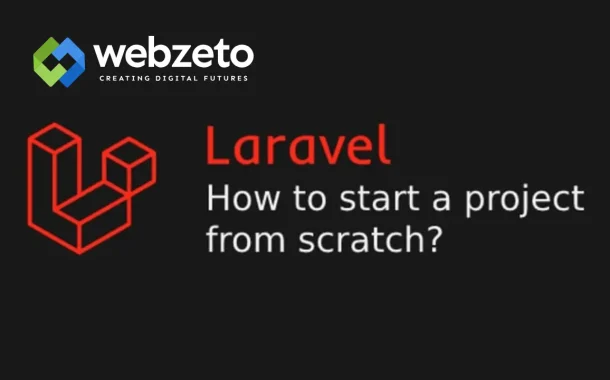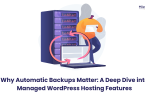Laravel comes with many helpful features. It has an easy-to-use routing system for defining URLs. It also includes an authentication system, so you can protect your app with login and registration features. Laravel’s Eloquent ORM makes working with databases simple. It allows you to interact with your database using easy-to-read code. Other features include built-in support for testing, task scheduling, and real-time events.
Table of Contents
Table of Contents
Prerequisites for Starting a Laravel Project
System Requirements
Before starting a Laravel project, ensure your system meets the necessary requirements. Laravel needs PHP 8.1 or higher to run smoothly. You also need a local development server like Apache or Nginx. For the database, MySQL or SQLite are commonly used. Ensure your system has Composer installed, as it’s needed to manage Laravel’s dependencies.
Installing Composer
Composer is a tool that manages libraries and dependencies for PHP projects. It is essential for setting up a Laravel project. To install Composer, visit the official website and follow the instructions for your operating system. After installation, you can use Composer to install Laravel and manage project dependencies.
Setting Up PHP and MySQL
Make sure PHP and MySQL are correctly set up on your system. You can install PHP through package managers like Homebrew for macOS or apt-get for Linux. For MySQL, download it from the official MySQL website and follow the setup process. Ensure that your PHP installation has all necessary extensions, like OpenSSL and PDO, to run Laravel.
Creating a New Laravel Project
- Installing Composer: First, ensure Composer is installed on your system. Composer is a dependency management tool for PHP, which helps install Laravel and its required libraries. It’s essential for setting up a new Laravel project.
- Creating the Laravel Project: Once Composer is ready, you can create a new Laravel project. This will automatically download the Laravel framework and set up the necessary files for your application. You can name your project during this step, and Laravel will structure it for you.
- Setting Up Your Development Environment: After creating the project, you need a local development environment. Use tools like XAMPP or Laravel Homestead to create a server on your computer. This ensures the application runs correctly during development.
- Opening the Project in a Code Editor: Now that your project is set up, open it in a code editor like Visual Studio Code. This is where you’ll write your code and make changes as needed to build your application.
- Verifying the Installation: Lastly, verify that everything is working by accessing your project in a browser. Ensure that it loads properly, confirming that your Laravel project is ready for development.
Configuring the Laravel Environment
1. Setting Up the .env File
The .env file in Laravel is used to store environment variables, such as database credentials and application keys. This file is essential for configuring the settings of your application. When you first create a Laravel project, the .env file is automatically included. Make sure to configure it with the correct values, like your app name, database connection, and mail settings.
2. Configuring Database Connection
Laravel supports various databases, such as MySQL, PostgreSQL, and SQLite. In the .env file, you’ll need to specify the database connection details, including the host, database name, username, and password. After this, Laravel will connect to your database for storing and retrieving data.
3. Setting Application Key
Laravel uses an application key for encryption and security. This key is automatically set when you create the project. However, if you need to regenerate it, you can use Artisan commands. Make sure this key is kept secret and secure.
4. Caching Configuration
Laravel allows you to cache your configuration settings to improve performance. You can cache the configuration by running the appropriate Artisan command. This stores your settings in a cache, speeding up the loading time of your application.
Building Routes, Controllers, and Views
1. Defining Routes
Routes in Laravel define how your application responds to user requests. You can set up routes in the routes/web.php file. Each route maps a URL to a specific action or view. For example, you can create routes to handle requests for the homepage, login, or other sections of your application.
2. Creating Controllers
Controllers in Laravel handle the logic behind the routes. They manage user requests, interact with the database, and return responses. You can create controllers using Artisan commands, and inside them, you define methods that correspond to the routes you set up. Controllers help keep your code organized and maintainable.
3. Creating Views
Views are the files that display content to the user. In Laravel, views are stored in the resources/views directory. You can create HTML templates mixed with Laravel Blade syntax to build dynamic content. Blade templates allow you to use variables and control structures to display data passed from controllers.
4. Connecting Routes, Controllers, and Views
Once your routes, controllers, and views are set up, you need to connect them. Routes call controller methods, and controllers pass data to views. For example, when a user visits a route, the controller fetches data from the database and passes it to a view for display. This is the core process of handling requests and rendering pages in Laravel.
Working with Databases in Laravel
Eloquent ORM Basics
Eloquent is Laravel’s built-in ORM (Object-Relational Mapping) system that simplifies interacting with databases. It allows you to work with database records as objects. You define models in Laravel, and each model corresponds to a database table. Eloquent provides methods to insert, update, delete, and query data in a simple and expressive way.
Running Migrations
Migrations are like version control for your database. They allow you to define and modify your database structure using code, ensuring consistency across different environments. Laravel provides Artisan commands to create migrations for creating or updating tables. Once created, you can run migrations to apply changes to the database.
Query Builder
For more complex queries, Laravel’s query builder offers a fluent interface to interact with the database. It allows you to write SQL-like queries using a chainable syntax. You can perform operations like selecting, inserting, updating, and deleting records without writing raw SQL.
Relationships Between Models
Laravel supports various types of relationships between models, like one-to-many, many-to-many, and one-to-one. You can define these relationships in your models and then use Eloquent methods to retrieve related data. These relationships make working with related data more efficient and intuitive.
Testing Your Laravel Application
To ensure your Laravel application functions as expected, writing unit tests is essential. Laravel uses PHPUnit for testing, allowing you to test individual methods and functions. By creating test classes, you can write test methods that check if different parts of your application are working correctly. Unit tests help identify issues early, ensuring your code stays reliable.
Once the tests are written, you can easily run them using Laravel’s Artisan commands. This allows you to execute all your tests or target specific ones. Running tests frequently helps you catch bugs and prevents unexpected behavior, making sure your application remains stable throughout development.
Laravel also offers features for testing database interactions. You can create a temporary database for testing without affecting the production data. This allows you to test database queries, migrations, and model relationships to ensure they work as expected in a real environment.
Deploying the Laravel Application
Before deploying your Laravel application, ensure it’s ready for production. Double-check your .env file to make sure the environment variables are set correctly for production, especially for the database and any external services. Run optimization commands to clear caches, compile assets, and improve performance. This ensures your application runs smoothly and efficiently once deployed.
Next, choose a suitable hosting provider that supports PHP and Laravel. Providers like DigitalOcean, AWS, and shared hosting options such as SiteGround work well for Laravel projects. Make sure the server has the required software, including PHP, MySQL, and Composer, to run your application without issues.
After selecting a provider, upload your project files to the server using FTP, SFTP, or Git. Ensure you upload all necessary files, excluding the node_modules and any other files in your .gitignore. Set the correct file permissions for the storage and cache directories to ensure proper functionality.
Conclusion
Starting a Laravel project is straightforward with the right tools and setup. By following the steps of installing Composer, configuring the environment, and creating your first project, you set the foundation for building powerful web applications. Laravel makes development easier with its clean structure and helpful features.
Once your project is set up, continue by building routes, controllers, and views, then connect them with the database using Eloquent. Testing and deploying your application ensures it works well in production. With these steps, you’re ready to develop efficient, scalable applications using Laravel.














